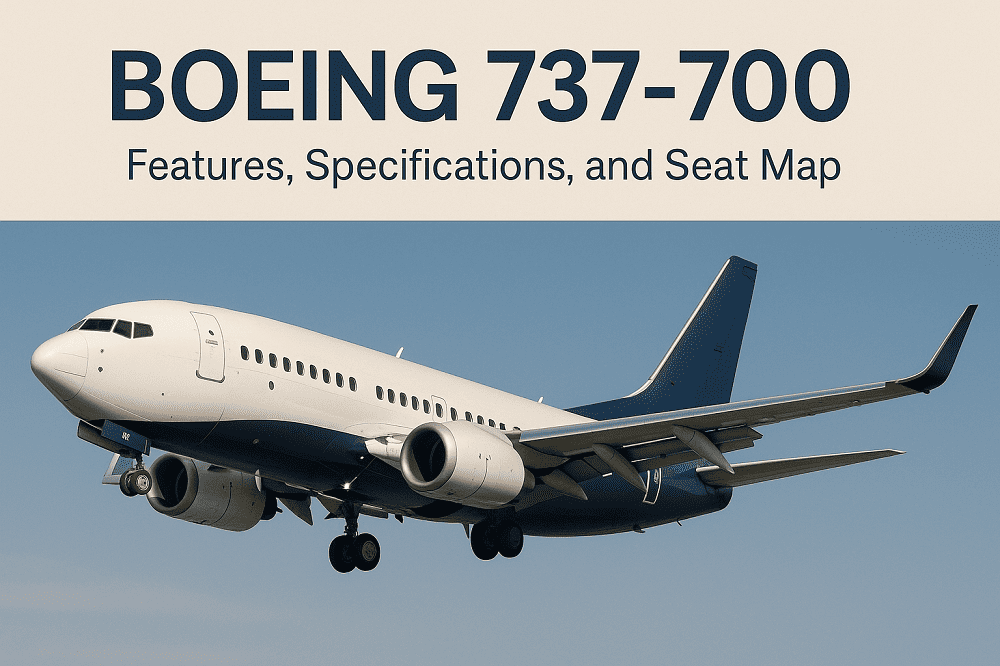Discover the remarkable Boeing 737-700, a groundbreaking aircraft that revolutionized commercial aviation with its innovative design, exceptional performance, and versatile capabilities. Let’s explore what makes this aircraft a preferred choice for airlines worldwide.
Aircraft engine stands for rent
Overview of the Boeing 737-700
The Boeing 737-700, introduced in 1997, represents a significant advancement in commercial aviation as part of the Boeing 737 Next Generation series. This short to medium-range airliner features:
- Narrow body design with fixed low wings
- Regular mid-set tail configuration
- Advanced propulsion system with two underwing-mounted multi-jet engines
- State-of-the-art avionics technology
- Enhanced aerodynamic features
History and Development
The Boeing 737-700 emerged as a direct successor to the Boeing 737-300, marking a new chapter in aviation history. Its development focused on meeting increasing demands for fuel efficiency and environmental consciousness while incorporating cutting-edge technologies that exceeded industry expectations.
Market Position and Popularity
The aircraft’s success in the commercial aviation sector stems from its exceptional versatility and reliability. Key factors contributing to its widespread adoption include:
- Optimal balance of capacity and range
- Extensive support network from Boeing
- Cost-effective operations
- Compatibility with existing airport infrastructure
- Commonality with other 737 variants
Engine Stand CFM56-7B For Rent
Design and Features of the Boeing 737-700
The aircraft’s design philosophy combines innovation with practical engineering, featuring advanced propulsion systems and aerodynamic enhancements that deliver superior performance and operational efficiency.
Exterior Design
| Dimension | Measurement |
|---|---|
| Length | 110 feet 4 inches (33.6 meters) |
| Wingspan | 112 feet 7 inches (34.3 meters) |
Interior Layout and Comfort
The Boeing 737-700’s interior emphasizes passenger comfort and operational flexibility with:
- Flexible seating configuration (126-149 passengers)
- Boeing’s Sky Interior with sculpted sidewalls
- LED mood lighting system
- Larger pivot bins for carry-on luggage
- Ergonomically designed seats
- Optional in-flight entertainment systems and power outlets
Specifications and Performance
The aircraft combines advanced technology with efficient design, featuring improved aerodynamics through its fixed low wings and regular mid-set tail. The modernized cockpit includes advanced avionics and control systems, ensuring optimal flight management and enhanced safety standards.
Engine and Technical Specifications
| Specification | Measurement |
|---|---|
| Engine Type | Two CFM56-7B turbofan engines |
| Engine Thrust | 117 kN each |
| Wingspan | 34.32 meters (112 feet 7 inches) |
| Length | 33.6 meters (110 feet 4 inches) |
| Height | 12.5 meters (41 feet 2 inches) |
| Maximum Takeoff Weight | 70,080 kg (154,500 lb) |
| Maximum Landing Weight | 58,604 kg (129,200 lb) |
The underwing-mounted engines feature a high bypass ratio, delivering superior fuel efficiency and reduced noise levels compared to previous 737 models. The aircraft’s tricycle retractable landing gear ensures smooth operations across various runway conditions, enhancing operational versatility.
Range and Fuel Efficiency
The Boeing 737-700 demonstrates exceptional performance capabilities with a maximum range of 6,370 kilometers (3,440 nautical miles), making it ideal for short to medium-haul routes and transcontinental flights.
- Advanced blended winglet technology for enhanced aerodynamics
- Up to 4% improvement in range with winglet configuration
- Reduced fuel consumption by approximately 4% compared to non-winglet models
- Optimized operational costs through efficient engine performance
- Reduced environmental impact through improved fuel efficiency
Boeing 737-700 Seat Map and Configuration
The Boeing 737-700’s versatile design allows airlines to implement various seating configurations, adapting to different route requirements and market demands. This flexibility, combined with quick reconfiguration capabilities, has established the aircraft as a preferred choice for carriers worldwide.
Seating Capacity and Arrangement
- Two-class configuration – 126 passengers
- Single-class layout – up to 149 passengers
- Standard economy configuration – 3-3 seating arrangement
- Premium class option – 2-2 configuration in forward cabin
- Customizable layouts based on route requirements
Class Options and Amenities
Airlines customize their Boeing 737-700 interiors with various class configurations and modern amenities:
- First Class/Business Class options in forward cabin
- Standard Economy class with optimized comfort
- Premium Economy sections with enhanced legroom
- Modern entertainment systems and Wi-Fi connectivity
- Spacious overhead bins for increased storage
- Boeing Sky Interior featuring LED lighting and sculpted sidewalls
Airlines Operating the Boeing 737-700
The aircraft’s versatility and efficiency have made it a cornerstone of numerous airline fleets worldwide. WestJet, Canada’s leading leisure airline, exemplifies successful deployment of the 737-700, achieving superior reliability and operational efficiency across their network.
Major Airlines and Routes
United Airlines operates the 737-700 with three distinct configurations: Domestic Layout 1, Domestic Layout 2, and Micronesia routes layout. The aircraft serves diverse destinations including Istanbul, Newcastle, and Berlin, demonstrating its adaptability to various route requirements and market conditions.
Customer Reviews and Feedback
Customer feedback on the Boeing 737-700 reveals distinct preferences based on flight duration and cabin configuration. The aircraft receives particularly positive reviews for shorter journeys, with passengers appreciating its reliability and efficient boarding process due to its compact size.
- Optimal comfort for flights between 1.5 to 2 hours
- Smoother boarding experience compared to larger aircraft
- High reliability ratings across different routes
- Mixed feedback on seating comfort for longer flights
- Limited lavatory facilities compared to 737-800 (two versus three)
| Aspect | Passenger Feedback |
|---|---|
| Short Flights | Generally positive, comfortable seating |
| Long Flights | Mixed reviews, some report cramped conditions |
| Boarding Process | Efficient and well-organized |
| Lavatory Access | Limited compared to 737-800 |
| Overall Experience | Varies by airline configuration |
Airlines continue to refine their 737-700 configurations, seeking the optimal balance between passenger comfort and operational efficiency. While some travelers express preference for the larger 737-800 model, particularly on extended routes, the 737-700 maintains its position as a reliable choice for short to medium-haul flights.
Other articles:
- Boeing 707: History, Features, and Impact on Aviation
- Boeing 777: Features, Specifications, and Insights
- Boeing 737 Max: Latest Updates and Safety Information
- Boeing 737-900: Specifications, Features, and Seat Map
- Boeing 717: Specifications, Features, and Flight Experience
- Boeing 767: Specifications, Features, and Insights

